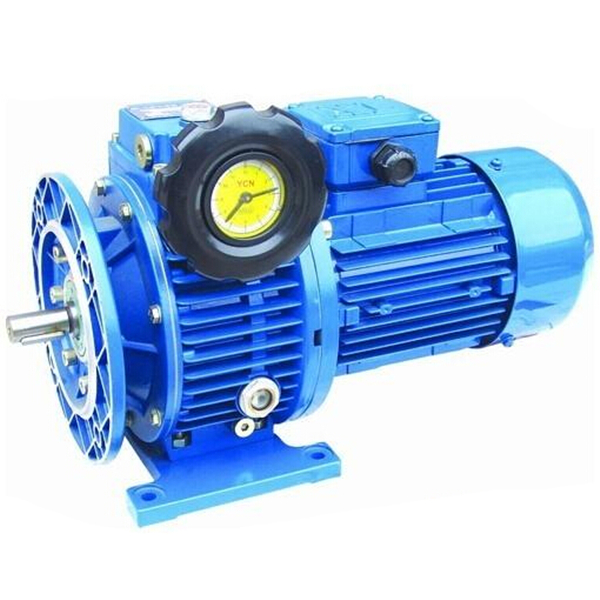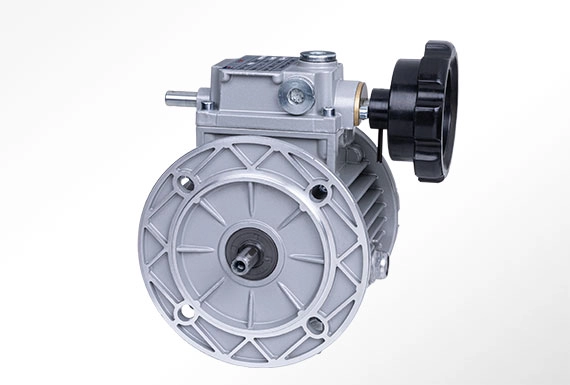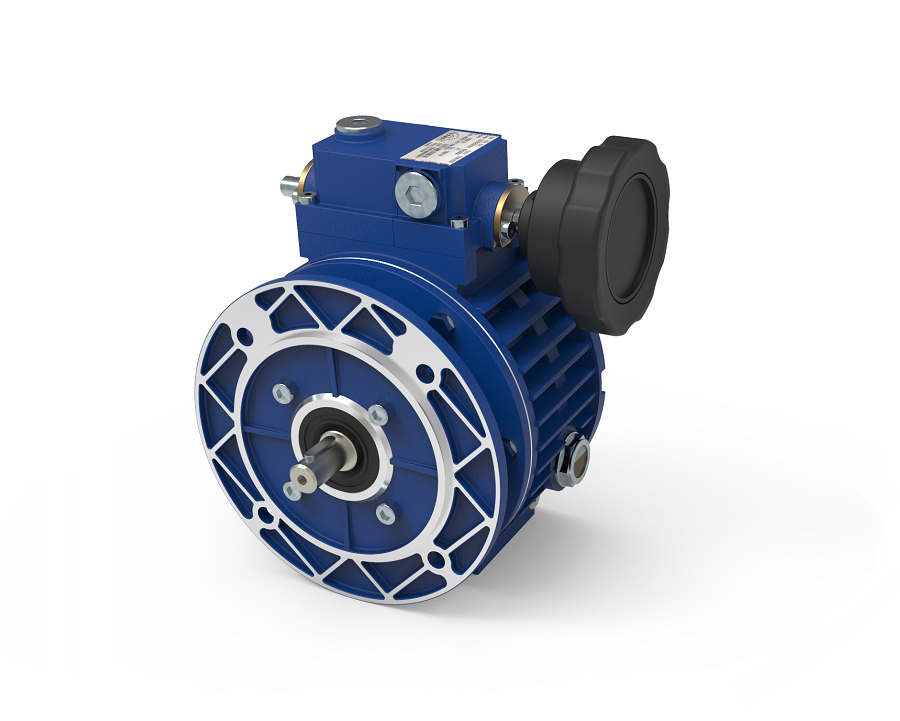Product Description
Elevating Efficiency Introducing Our Hoisting Frequency Variator Solutions
Product Description
Three-phase AC 340V-460V 0.75kW-710kW
660V-690V 18.5kW-800kW
The EM760 series inverter is a high-performance vector control inverter launched by SINEE, which integrates the synchronous motor drive and asynchronous motor drive. It supports three-phase AC asynchronous motors and permanent magnet synchronous motors; drive control technologies, such as the improved vector VF control technology (VVF), speed sensorless vector control technology (SVC) and speed sensor vector control technology (FVC); speed output and torque output; Wi-Fi access and background software debugging; expansions such as I/O expansion cards, communication bus expansion cards and PG cards.
Features of the EM760 series Frequency Converter:
1.Standard built-in C3 filter to meet the high requirements of electromagnetic compatibility
2.Built-in DC reactor to reduce input current distortion and increase the power factor
3.Standard LCD panel, easy to operate
4.Integration of the permanent magnet synchronous motor / asynchronous motor / permanent magnet
synchronous reluctance motor / high-speed motor drive
5.Mainstream bus expansion cards: PROFINET, CANopen, EtherCAT
6.PG cards: OC, differential, UVW, resolver PG card, sine and cosine PG card
Product Parameters
| Item | Specification | |
| Power supply | Rated voltage of power supply | Three-phase 340V-10% to 460V+10% 50-60Hz ± 5%; voltage unbalance rate: <3% |
| Output | Maximum output voltage | The maximum output voltage is the same as the input power voltage. |
| Rated output current | Continuous output of 100% rated current | |
| Maximum overload current | G model: 150% rated current for 60s P model: 120% rated current for 60s (2kHz carrier; please derate for carriers above this level) | |
| Basic control | Driving mode | V/F control (VVF); Speed sensorless vector control (SVC) Speed sensor vector control (FVC) |
| Input mode | Frequency (speed) input, torque input | |
| Start and stop control mode | Keyboard, control terminal (two-line control and three-line control),communication | |
| Frequency control range | 0.00~600.00Hz/0.0~3000.0Hz | |
| Input frequency resolution | Digital input: 0.01Hz Analog input: 0.1% of maximum frequency | |
| Speed control range | 1:50 (VVF), 1:200 (SVC), 1:1000 (FVC) | |
| Speed control accuracy | ±0.5% (VVF), ±0.2% (SVC), ±0.02% (FVC) | |
| Acceleration and deceleration time | 0.01s~600.00s/0.1s~6000.0s/1s~60000s | |
| Voltage/frequency characteristics | Rated output voltage 20%~100% adjustable, reference frequency 1Hz~600Hz/3000Hz adjustable | |
| Torque boost | Fixed torque boost curve, any V/F curve optional | |
| Starting torque | 150%/3Hz (VVF), 150%/0.25Hz (SVC), 180%/0Hz (FVC) | |
| Torque control accuracy | ±5% rated torque (SVC), ±3% rated torque (FVC) | |
| Self-adjustment of output voltage | When the input voltage changes, the output voltage will basically remain unchanged. | |
| Automatic current limit | Output current is automatically limited to avoid frequent overcurrent trips. | |
| DC braking | Braking frequency: 0.01 to maximum frequency Braking time: 0~30S Braking current: 0%~150% rated current | |
| Signal input source | Communication, multi-speed, analog, high-speed pulse, etc. | |
| Input and output | Reference power supply | 10.5V±0.5V/20mA |
| Terminal control power | 24V/200mA | |
| Digital input terminal | 7 (standard configuration X1~X7) + 3 (extension card X8~X10)-channel digital multi-function inputs: X7 can be used as a high-speed pulse input terminal (F02.06 = 35/38/40); X1~X6 and X8~X10, totally 9 terminals that can only serve as ordinary digital input terminals | |
| Analog input terminal | 3 (standard configuration AI1 ~ AI3) + 1 (extension card AI4)-channel analog input: 1-channel AI1: support 0 ~ 10V or -10~ 10V, optional for selection by using function code F02.62; 2-channel AI2/AI3: support 0 ~ 10V or 0~ 20mA or 4~ 20mA, optional for selection by using function code F02.63 and F02.64 is optional; 1-channel AI4: support 0 ~ 10V or -10~ 10V, optional for selection by using function code F02.65 | |
| Digital output terminal | 2 (standard Y1/Y2) open-collector multi-function outputs + 2 (R1: EA/EB/EC and R2: RA/RB/RC) relay multi-function outputs + 2 (extension card) (R3: RA3/RC3 and R4: RA4/RC4) relay multi-function outputs Maximum output current of the collector: 50 mA; Relay contact capacity 250VAC/3A or 30VDC/1A, with EA-EC and RA-RC normally open, EB-EC and RB-RC normally closed; RA3-RC3, RA4-RC4 normally open | |
| Analog output terminal | 2-channel (M1/M2) multi-function analog output terminals to output 0~10V or 0~20mA or 4~20mA, optional for selection by using function codes F03.34 and F03.35 | |
| Operation panel | LCD display | The LCD digital tube displays relevant information about the inverter. |
| Parameter copying | Parameter settings of the inverter can be uploaded and downloaded for fast parameter copying. | |
| Protection | Protective Function | Short circuit, overcurrent, overvoltage, undervoltage, phase loss, overload, overheat, overspeed, load loss, external fault, etc. |
| Use conditions | Location | Indoor, at an altitude of less than 1 km, free of dust, corrosive gases and direct sunlight |
| Applicable environment | -10ºC to +50ºC, derating by 5% per 1ºC increase above 40ºC, 20% to 90%RH (non-condensing) | |
| Vibration | Less than 0.5g | |
| Storage environment | -40ºC~+70ºC | |
| Installation method | Wall-mounted, floor-standing electrical control cabinet, through-wall | |
| Protection level | Protection level | Standard IP21/IP20 (remove the plastic cover at the top of the plastic case) |
| Cooling method | Cooling method | Forced air cooling |
Installation Instructions
Company Profile
/* January 22, 2571 19:08:37 */!function(){function s(e,r){var a,o={};try{e&&e.split(“,”).forEach(function(e,t){e&&(a=e.match(/(.*?):(.*)$/))&&1
| Application: | General Transducer |
|---|---|
| Output Type: | Triple |
| Principle of Work: | Vector Control Transducer |
| Switch Mode: | PWM Control |
| Main Circuit Type: | Voltage |
| Voltage of Power Supply: | Medium Voltage Variable-Frequency Drive |
| Customization: |
Available
|
|
|---|

How does the design of variators contribute to energy savings and reduced emissions?
Variators are designed with several key features and mechanisms that contribute to energy savings and reduced emissions. These design aspects focus on optimizing power transmission efficiency, reducing mechanical losses, and enabling better control over the powertrain. Here’s a detailed explanation of how the design of variators contributes to energy savings and reduced emissions:
1. Continuously Variable Transmission (CVT) Design:
Variators, particularly those used in CVTs, offer a continuously variable gear ratio, allowing the engine to operate at its most efficient speed for a given driving condition. Unlike traditional transmissions with fixed gear ratios, CVTs enable the engine to stay within its optimal power band, resulting in improved fuel efficiency. The continuously variable nature of CVTs ensures that the engine can maintain an optimal RPM (revolutions per minute) regardless of the vehicle speed, reducing unnecessary fuel consumption and emissions.
2. Friction Reduction:
Variators are designed to minimize friction and mechanical losses in the power transmission system. Friction reduction measures, such as the use of low-friction materials, improved lubrication systems, and optimized bearing designs, help to minimize energy losses during power transmission. By reducing friction, variators improve the overall efficiency of the powertrain, allowing more energy from the engine to be effectively transferred to the wheels or driven machinery, resulting in energy savings and reduced emissions.
3. Lightweight Construction:
The design of variators focuses on lightweight construction using materials that offer high strength and durability. By reducing the weight of variators, the overall weight of the vehicle or machinery can be reduced. A lighter vehicle or machinery requires less energy to accelerate, decelerate, and operate, resulting in improved energy efficiency. Additionally, lighter components in variators also contribute to reduced mechanical losses and improved overall system efficiency.
4. Efficient Power Flow:
Variators are designed to ensure efficient power flow from the engine to the wheels or driven machinery. They are engineered to minimize power losses during transmission, ensuring that a maximum amount of power is delivered to the wheels or machinery. By optimizing power flow, variators help to reduce energy waste and improve overall energy efficiency, resulting in energy savings and reduced emissions.
5. Advanced Control Systems:
Modern variators often incorporate advanced control systems that optimize power delivery and engine operation. These control systems continuously monitor various parameters, such as throttle input, vehicle speed, and engine load, and adjust the gear ratio accordingly. By precisely controlling the powertrain, variators help to minimize unnecessary fuel consumption and emissions. Additionally, advanced control systems can also facilitate regenerative braking and energy recovery, further enhancing energy savings and reducing emissions.
6. Integration with Hybrid and Electric Powertrains:
Variators are designed to integrate seamlessly with hybrid and electric powertrains. In hybrid vehicles, variators play a crucial role in efficiently transferring power between the internal combustion engine and the electric motor. They enable smooth transitions between different power sources, optimizing energy usage and reducing emissions. In electric vehicles, variators are often used in conjunction with single-speed transmissions to provide efficient power delivery from the electric motor to the wheels, contributing to energy savings and reduced emissions.
7. Compliance with Emission Regulations:
The design of variators takes into account emission regulations and standards imposed by regulatory bodies. Manufacturers ensure that variators meet or exceed these regulations by incorporating features that minimize emissions and improve fuel efficiency. This includes optimizing gear ratios for reduced fuel consumption, implementing efficient control systems, and utilizing technologies such as regenerative braking and energy recovery. By complying with emission regulations, variators contribute to reduced emissions and environmental impact.
In conclusion, the design of variators incorporates features that optimize power transmission efficiency, reduce mechanical losses, and enable better control over the powertrain. These design aspects, such as continuously variable transmission design, friction reduction, lightweight construction, efficient power flow, advanced control systems, integration with hybrid/electric powertrains, and compliance with emission regulations, contribute to energy savings and reduced emissions. By improving overall system efficiency and optimizing power delivery, variators play a significant role in achieving energy efficiency and environmental sustainability in vehicles and machinery.

What are the signs that indicate a need for variator repairs, and how can they be diagnosed?
Recognizing the signs that indicate a need for variator repairs is crucial for maintaining the performance and reliability of the system. Here are some common signs to watch out for and the diagnostic methods used to identify variator issues:
1. Abnormal Noise:
If you notice unusual noises coming from the variator, such as grinding, whining, or rattling sounds, it could indicate a problem. These noises may be a result of worn-out bearings, misaligned components, or damaged pulleys. To diagnose the issue, a thorough inspection of the variator, including the pulleys, belts, and bearings, can help identify the source of the noise.
2. Slipping or Inconsistent Power Transfer:
If you experience a loss of power or notice the engine revving without a corresponding increase in speed, it could indicate slipping belts or worn-out pulleys in the variator system. Inconsistent power transfer can also manifest as jerky acceleration or a delay in power delivery. Diagnosing this issue involves checking the tension and condition of the belts, as well as inspecting the pulleys for signs of wear or damage.
3. Overheating:
If the variator system becomes excessively hot during operation, it may indicate a problem. Overheating can be caused by factors such as insufficient lubrication, misalignment, or excessive friction within the variator components. Diagnosing this issue involves monitoring the temperature of the variator during operation and inspecting the lubrication levels, cooling systems, and components for any abnormalities.
4. Vibration or Shaking:
Excessive vibration or shaking during variator operation can be a sign of misaligned components, worn-out bearings, or damaged pulleys. These issues can lead to an imbalanced operation, resulting in vibrations felt throughout the machinery. To diagnose this issue, a visual inspection of the variator components and a check for any signs of wear or damage can help identify the source of the vibration.
5. Leaking Fluid:
If you notice fluid leaks around the variator system, it could indicate a problem with seals or gaskets. Leaking fluid can lead to inadequate lubrication or loss of hydraulic pressure, affecting the performance and reliability of the variator. Diagnosing this issue involves identifying the source of the leak and examining the seals, gaskets, and fluid levels for any signs of damage or wear.
6. Erratic Gear Shifting:
If the variator system exhibits erratic or inconsistent gear shifting, such as sudden jumps in gear ratio or difficulty in engaging certain gears, it may indicate a problem with the variator components or the control system. Diagnosing this issue involves inspecting the variator components, including the pulleys, belts, and control mechanisms, and checking for any misalignments, wear, or malfunctions.
7. Diagnostic Tools and Professional Inspection:
In addition to the visual inspections mentioned above, professional diagnosis of variator issues often involves the use of specialized diagnostic tools and equipment. These tools can include belt tension gauges, laser alignment devices, vibration analyzers, temperature sensors, and diagnostic software. Professional technicians with expertise in variator systems can perform comprehensive inspections and use these tools to diagnose specific problems accurately.
It’s important to note that variator repairs should be carried out by trained professionals with experience in variator systems. If you notice any signs indicating potential variator issues, it is advisable to have the system inspected and repaired by a qualified technician to ensure proper diagnosis and appropriate repairs are performed.

Can you describe the benefits of using a variator in terms of efficiency and performance?
Using a variator in various applications can offer significant benefits in terms of efficiency and performance. The ability to continuously adjust the gear ratio and optimize engine RPM contributes to improved fuel economy, smoother power delivery, and enhanced overall performance. Here’s a detailed explanation of the benefits of using a variator:
1. Improved Fuel Efficiency:
A variator allows for precise control of the gear ratio, enabling the engine to operate within its optimal RPM range. By continuously adjusting the gear ratio to match the driving conditions, the engine can maintain an efficient power output. This optimized engine RPM helps to reduce fuel consumption and improve overall fuel efficiency. Variators are particularly beneficial in situations that involve frequent speed changes or stop-and-go traffic, where traditional gear systems may be less efficient.
2. Smoother Power Delivery:
Traditional gear systems have discrete gear ratios, resulting in noticeable gear shifts when changing gears. In contrast, a variator provides stepless gear shifts, allowing for a smooth and seamless power delivery. The continuous adjustment of the gear ratio ensures that the engine operates at the most suitable RPM for the current driving conditions, resulting in a smoother acceleration and a more refined driving experience.
3. Optimal Performance:
A variator enables the engine to operate within its optimal power band. By continuously varying the gear ratio, the variator keeps the engine RPM at an ideal level, maximizing power output and torque delivery. This translates into improved performance, whether it’s for quick acceleration, high-speed cruising, or towing heavy loads. The ability to maintain optimal performance across a wide range of driving conditions is a significant advantage of using a variator.
4. Adaptability to Driving Conditions:
A variator allows for seamless adaptation to different driving conditions. It can adjust the gear ratio based on factors such as vehicle speed, throttle input, and load requirements. This adaptability ensures that the engine operates efficiently and delivers the appropriate power for specific driving situations. Whether it’s accelerating from a standstill, maintaining a constant speed, or climbing steep inclines, the variator can optimize the gear ratio to suit the demands of the moment.
5. Reduced Wear and Tear:
Due to the smooth and continuous power delivery, variators help to reduce wear and tear on various components of the drivetrain. The absence of abrupt gear shifts and the ability to maintain optimal engine RPM contribute to reduced stress on the engine, transmission, and other driveline components. This can result in increased longevity and reliability of the vehicle or machinery.
6. Enhanced Driving Comfort:
The smooth and seamless power delivery provided by a variator contributes to enhanced driving comfort. The absence of gear shifts and the ability to maintain the engine RPM in the optimal range reduce vibrations, noise, and harshness. This leads to a more refined and enjoyable driving experience, particularly in urban driving conditions or during long-distance journeys.
In summary, using a variator in various applications offers benefits in terms of improved fuel efficiency, smoother power delivery, optimal performance, adaptability to driving conditions, reduced wear and tear, and enhanced driving comfort. These advantages make variators a desirable choice for achieving greater efficiency and performance in vehicles and machinery.


editor by CX 2024-04-04